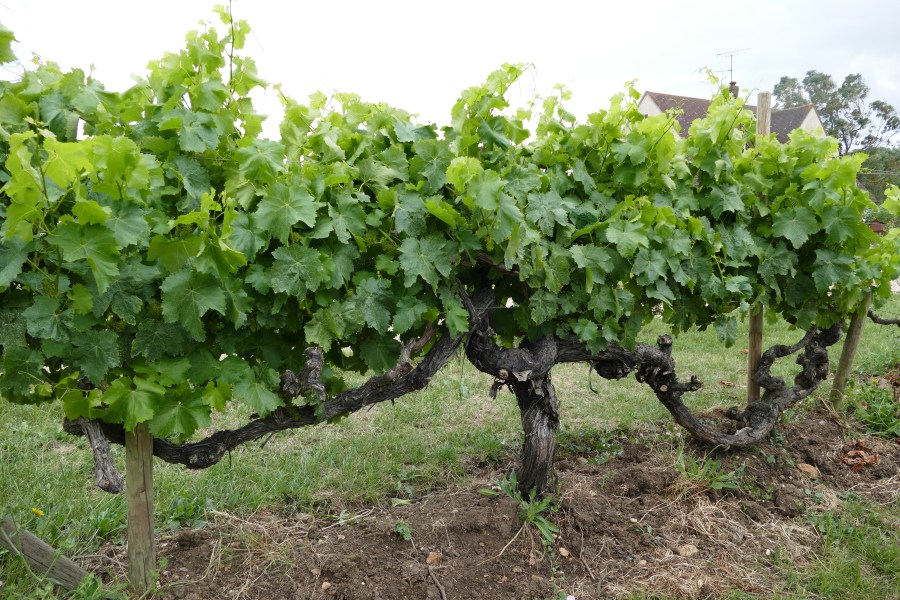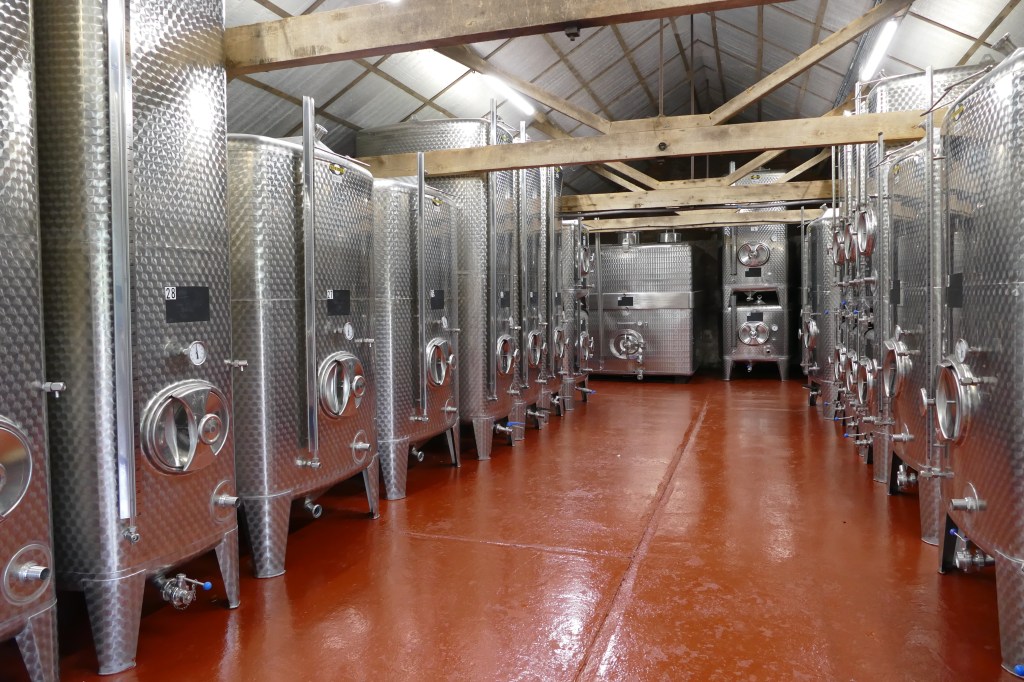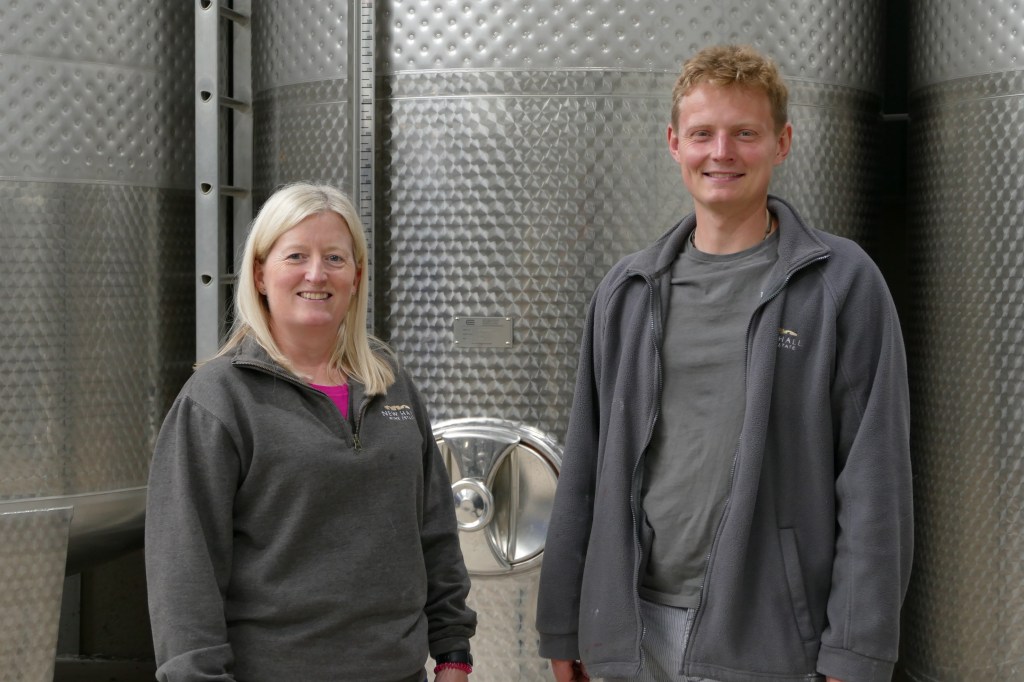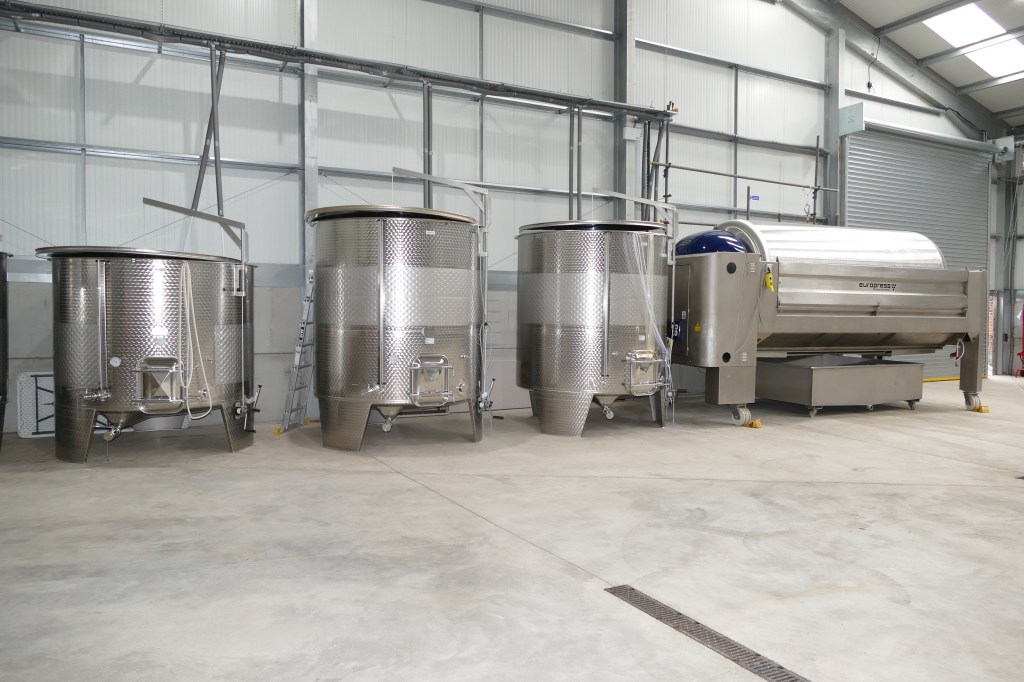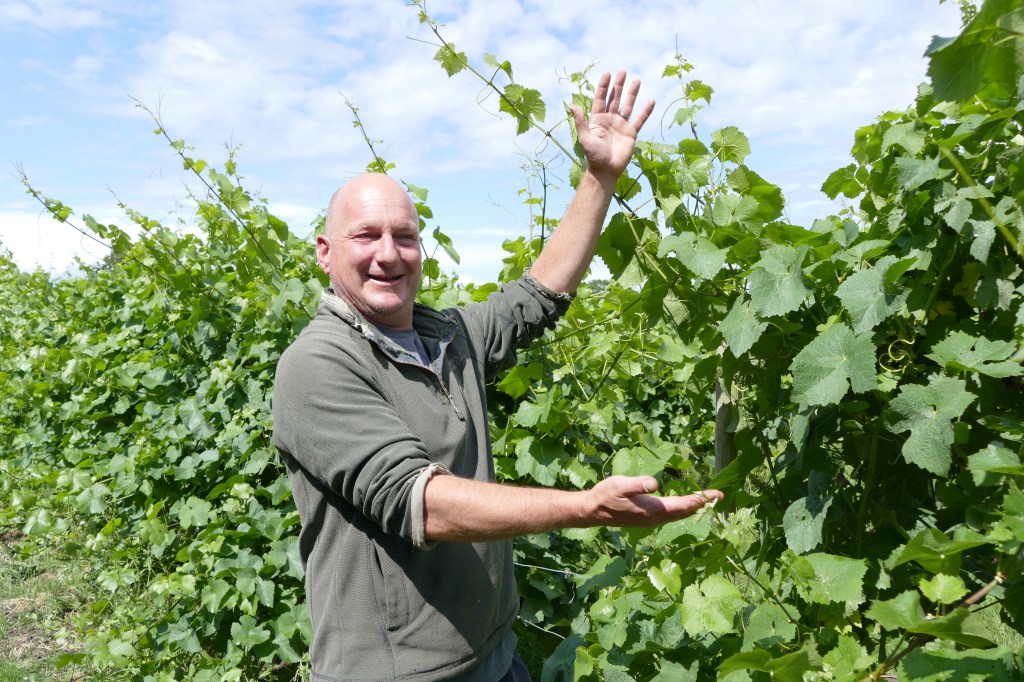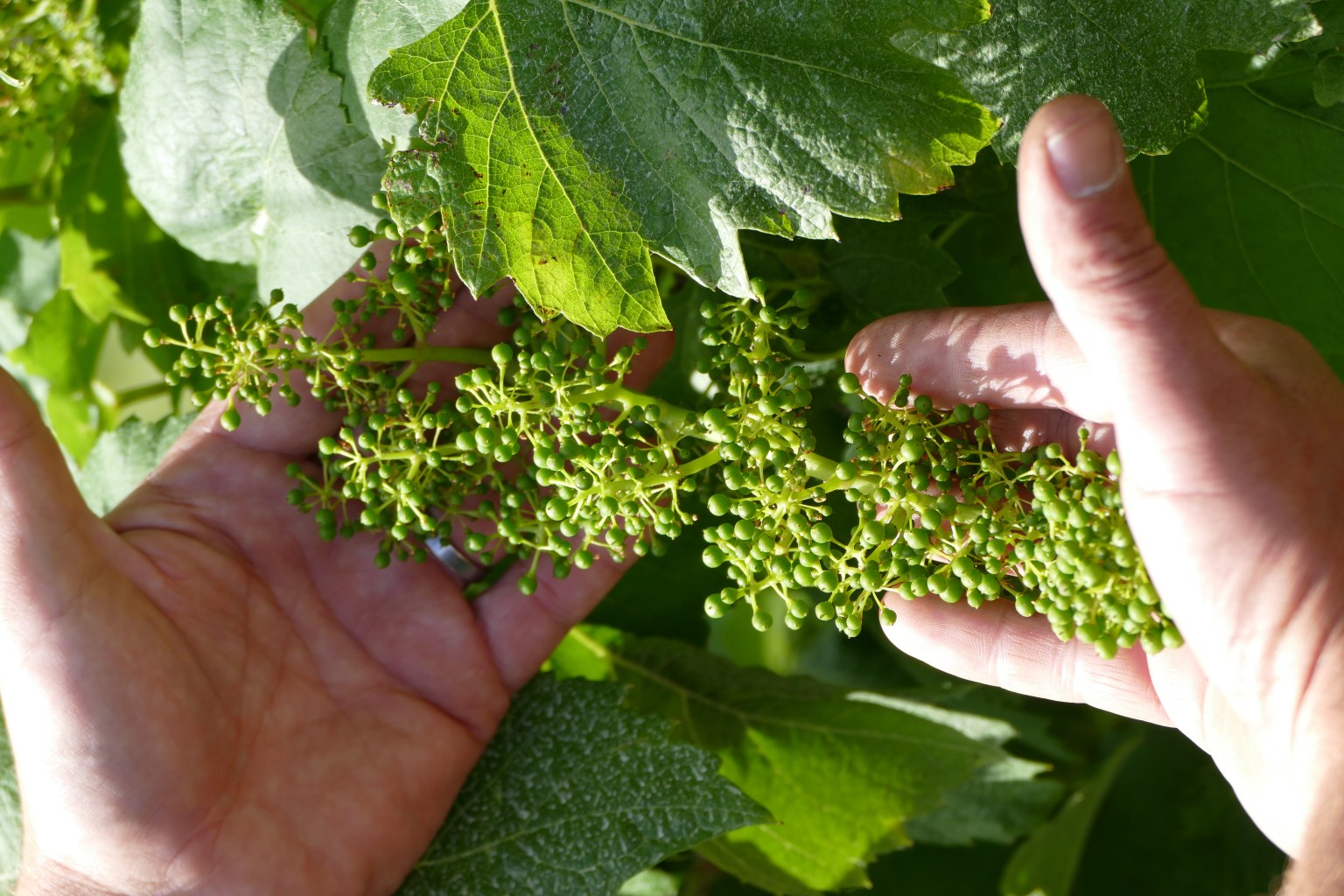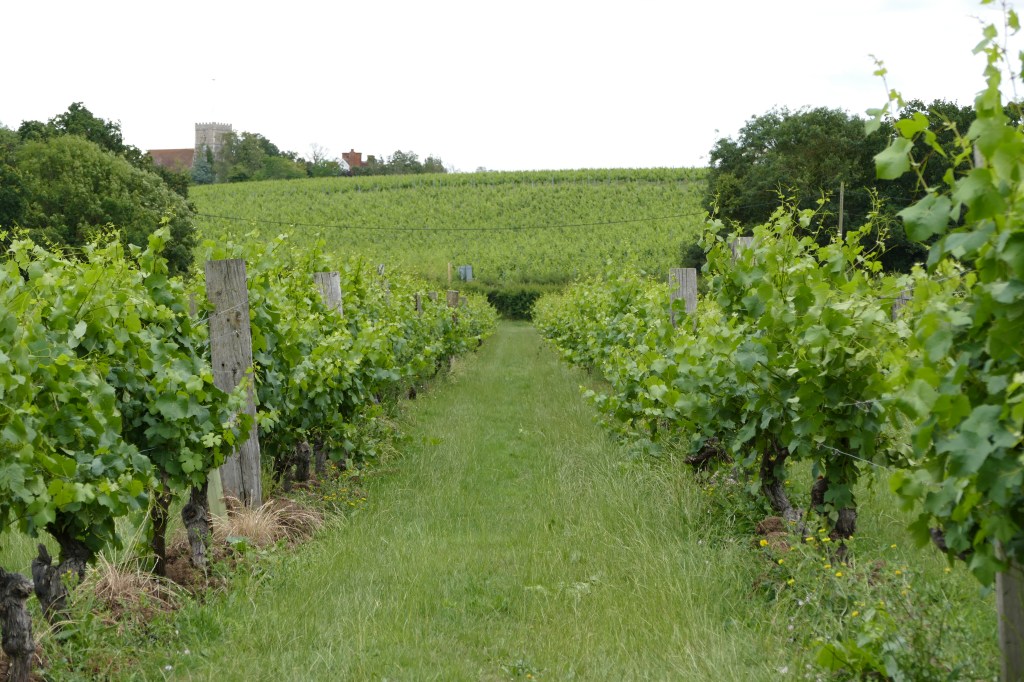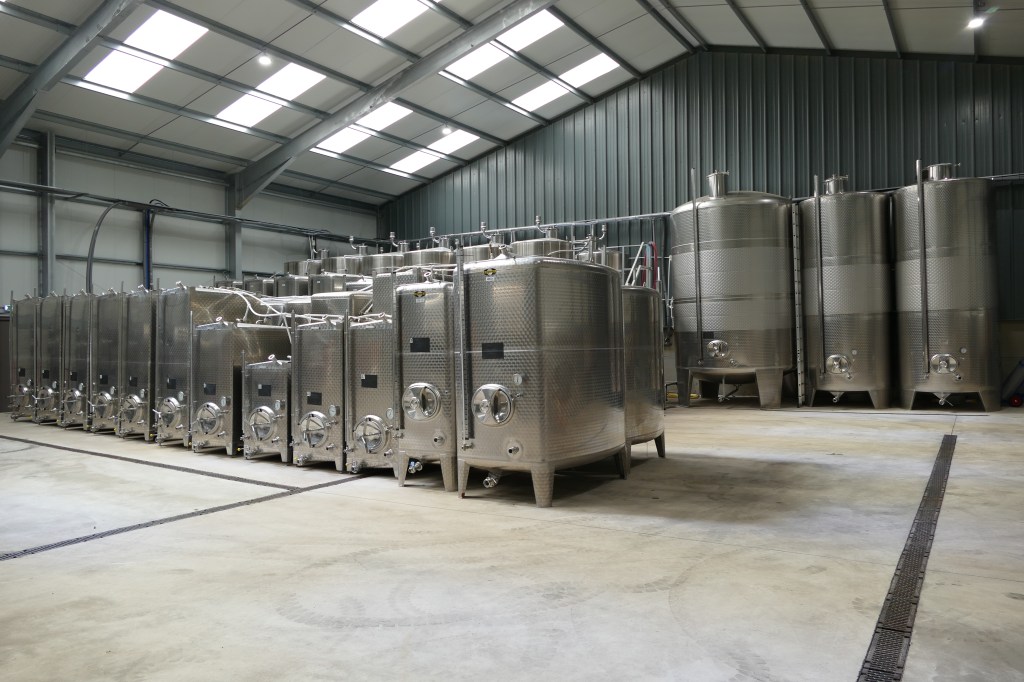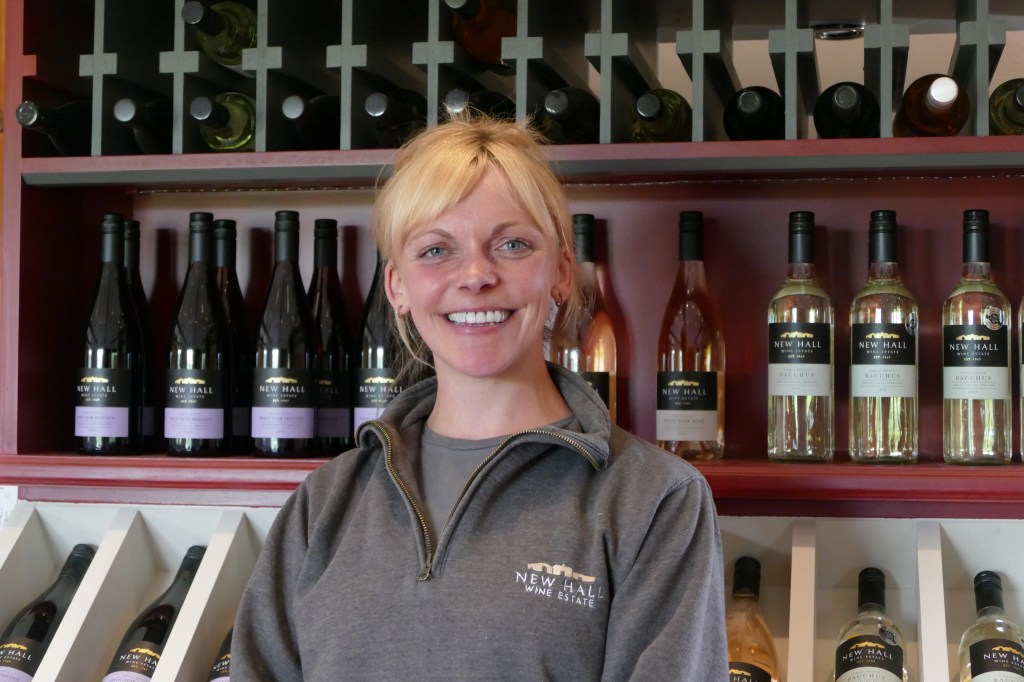Recent research has identified the Crouch Valley as having ideal conditions for viticulture. When Bill and Sheila Greenwood planted the first vines at New Hall Wine Estate they may not have had the benefit of modern scientific research but they certainly knew their land when they planted the first vines in 1969. As pioneers and part of a very small English wine industry in 1976 New Hall won a Gold Medal at the IWSC. The continuing expansion and development of this commercial vineyard has led to many accolades over the years and in 2013 Piers Greenwood was named UKVA Winemaker of the Year.
The American businessman Henry Ford said “If everyone is moving forward together then success takes care of itself,” New Hall Wine Estate is a fine example of this sentiment. Alongside its own success New Hall Wine Estate has also witnessed the strong growth of English and Welsh wine across many regions. New Hall is still a family business, with Chris Trembath at the helm and his daughter Becki as the next generation to join the team.
There are many remarkable aspects to New Hall Wine Estate but one of the first things that any visitor will notice is the Railway Barn. The Railway Barn has a romantic presence because it is a tribute to the past and acknowledges the many changes that have happened in the countryside. The invention of and the continued expansion of the railways created many possibilities for rural areas. Day trips and adventures into the countryside became possible for the masses until the Beeching Cuts of 1963. The Railway line that ran only a few hundred yards from the site of the current vineyard was axed. What was unknown to those decision makers in 1963 was that six years later the obsolete railway sleepers would be incorporated into the foundations of a new vineyard. The remnants of the industrial age would become the literal supports of the new vineyard at the forefront of a viticultural revolution. The initial planting of 850 Huxelrebe vines has now flourished into an amazing 125 acres with a variety of vines that is awe-inspiring.
Speaking to Andy Hares the vineyard manager at New Hall the full spectrum of grape varieties becomes apparent: Pinot Noir, Pinot Meunier, Huxelrebe, Pinot Gris, Muller Thurgau, Reichenstiener, Siegerrebe, Bacchus, Pinot Blanc, Schonbuger, Acolon, Rondo, Regent, Zweigeltrebe, Chardonnay, Ortega, Pinot Meunier, Fruhburgunder. This is already an amazing list that gives New Hall Wine Estate the scope to make some unique wines but still with an eye on the future next year there will be a planting of another ten acres and the new PIWI variety Caberet Noir will be added to the list. At a tasting of this new variety Rachel Appleton the assistant winemaker was excited by the possible black fruit flavours that this variety could bring to red wines.
Andy has been the vineyard manager at New Hall for eight harvests having previously worked in the French regions of Bergerac and St Emillion where he worked mainly with the Pinot Noir Variety. Describing his love of viticulture Andy said: “I love the variety and I love growing grapes, the life cycle of the vines is truly amazing.”
It is not always plain sailing for a vineyard that has so many different varieties planted in different decades. Andy explained that some of the rows are planted at 4m some at 3m and some at 2m, these variations representing experiments with the aspect of planting density. This creates certain difficulties around the machines that can be used.
There are also different growing systems, one of these is a rather unique adaptation of the Scott Henry that has a double curtain giving a beautiful if slightly dense canopy. This tendency towards dense canopy can sometimes lead to a lack of flow and the vines can then be susceptible to downy mildew so Andy is ever vigilant for the first signs of disease pressure. Andy and the vineyard team work constantly to improve the fruit quality. This has included systematically lifting the canopy aiding airflow and assisting with ripeness levels especially in the red grape varieties.
“This year around the middle of May the vines were about a month behind; spring was such a non-event,” explained Andy but by 5 July the day Vineyard visited New Hall flowering was over and owing to the recent warm weather the vines are now in line with what is considered average for the time of year.
Deciding what is average and what to expect is not easy on a site with so many varieties and Andy has deep knowledge of all the intricacies of each of the planting blocks. Whilst looking through the vineyard Andy points out what will be some extremely elongated large bunches of Pinot Noir. “Large that is for Pinot Noir but very different in comparison to varieties such as Huxelrebe,” said Andy. Every year brings its own unique challenges “it is going to be an interesting year again,” he added with half a smile and half a frown.
“The Siegrebbe will be harvested the first week in September” explained Andy. Prior to Covid-19 the early ripening of the Siegrebbe would also coincide with a festival weekend that would see local families enjoy time amongst the vines. For 2023 there was a ticketed ‘Summer Vibes in the Vines’ event on 21 July which will include tours and tastings, music and open fire lunch. It is also possible to visit the cellar door on a Saturday and at certain times of year it is possible to travel the vineyard trail which has a beautiful map illustrating the varieties as visitors walk the 1km trail that offers views of the local wildlife as well. (As we stand at the entrance to the winery a fabulous brown hare hopped past, once a common sight in the countryside, this is just one of the many species to be found here.)
New Hall Wine Estate rarely has frost, “the weather is very site specific,” said Andy. To illustrate his point in September 2022 the met office reported that some sites in the south east received rainfall well in excess of 150% of the long term average. When many other areas were relieved to have copious amounts of rain in September 2022 New Hall had absolutely no rain for the entire month of September. “You could literally see the clouds split as they passed over the site,” said Andy. This lack of rain led to a fall in yields of around 30% for 2022. In 2012 however, which was generally a poor year across the UK the unique climate of Essex and the Crouch Valley in particular meant that 33% of national production was harvested by the vineyards of Essex.
In terms of pests in the vineyard there is now little bird predation so there is no need to net the vines. Although Andy pointed out that when he started there was a grain silo full of nets so this must have been a task undertaken in the past. There are however quite significant populations of Muntjack deer and these are dealt with by leaving some sacrificial rows and the deer mainly stick to the one area of the vineyard.
Other pests in the vineyard are wasps. “The Rondo ripens early and the wasps love it,” Andy explained. Andy has found an unusual side effect of the product Sentinel – a fertiliser which contains the natural product salicylic acid – is that the wasps will stop feeding on the grapes within one hour of application and the rows that were earlier swarming with hungry wasps will then remain free for 7-10 days.
In France Andy worked on organic systems and New Hall is working hard to reduce inputs, undertaking disease modelling and using the latest technology such as a Sencrop station to ensure that applications are used to maximum effect. For the last four years New Hall have been using Sectormentor to build a pattern of data for the future.
The number of varieties at New Hall has indirectly influenced the purchase of a new Machine Harvester. These machines are impressive both in size and capability but at New Hall the New Holland machine harvester purchased in 2022 through Ernest Doe has been such a benefit bringing in the 220 tonnes of fruit from the 2022 harvest (Yields at New Hall have reached as high as 270 tonnes). Andy estimated it would pay for itself within five years. He was quick to praise the forward thinking of Chris Trembath for the decision to purchase the machine.
“There is a skill to picking fruit quickly,” said Andy and with 20-30 labourers for harvest for more than three weeks it becomes very expensive. Finally on the point of labour at harvest Andy concluded: “Ensuring an adequate supply of well trained and skilled pickers is only going to become more difficult.”
The problem of securing skilled pickers is compounded by the numerous varieties at New Hall as everything is ready at different times. The machine harvester has effectively taken a problem and dispensed with it. “We can pick an acre at 5am on a random Tuesday morning if that variety is ready and not have to worry about getting a team in and then occupying them for the rest of the day and we can leave fruit hanging longer without worrying about labour constraints, our numerous varieties make our harvest rather unique,” said Andy. In effect the machine harvester means that New Hall can work on the timescale that the vines determine rather than being influenced by other external factors. The early ripening Siegrebbe is a perfect example of the benefits of the machine harvester, “there is such a balance between what the winery want in the way of sugars and what we can give them from the vineyard; Siegrebbe becomes over ripe very quickly,” said Andy.
All the varieties at New Hall offer both those who work in the winery and those who work in the vineyard a fantastic opportunity to get a well rounded knowledge. With so many varieties here there are opportunities that are not to be found everywhere in the UK. It is surprising to learn therefore that Andy is looking for both an assistant manager and a vineyard assistant (offering an apprenticeship for this position). “It is an amazing industry to be involved with,” said Andy and anyone who finds themselves working with Andy and these vines will build up their skill set very quickly.
Andy finally declared that his favourite variety to work with was Acolon. “It is the closest to the perfect grape with big bunches and it yields well,” he said. The winery team had different ideas for their favourite variety to work with Rachel Appleton who has been the production manager for three years choosing two varieties for very different reasons. “Siegrebbe ripens so early; for the 2022 season it was picked on 26 August which is really early and it is what I call ‘living the dream day,’” said Rachel. On this first day of picking all the winery staff, office staff and vineyard team pick the grapes together. “It is a really nice day of picking and tasting a few of the grapes and then we bring it back and make wine out of it and then there is about a week before the next variety is ready,” added Rachel. The second variety that Rachel mentions is Schonberger for its “extremely versatile, big berries that are a pretty green with a pink shine.” The head winemaker Olly Shaw was appointed on 19 May 2023 and on the subject of varieties Olly said: “I am looking forward to working with the variety Zweigeltrebe having not worked with this variety before but it can deliver a very concentrated style.”
From the entrance to the winery it is possible to see five varieties “which creates a spectacular autumnal display,” said Rachel. On entering the winery it is very obvious that this place is special. Not only is it incredibly photogenic it has a cosy and appealing vibe. Rachel and Olly smile as they describe it as the ‘heritage winery.’ This area has the capacity for storage of up to 70,000 litres but this is only the beginning.
There are double doors leading from this heritage winery and beyond is a really modern winery space. The winery was upgraded in 2021 by Graham Heath Construction and was ready to accept grapes about one week before the 2021 harvest began. Storage capacity has now increased dramatically to over 120,000 litres with 170,000 bottles produced under the New Hall label in 2022.
Working with UK suppliers such as Core Equipment, BevTech, Vigo and WR Services it has ensured an array of quality equipment in the new winery catering for every need during harvest. There are now 89 individual tanks ranging in capacity from 750 litres up to 23,500 litres. This allows the winery so much versatility to take advantage of the different varieties and within that the different blocks. In the future this will also allow the winemaking team to work with different yeast strains and “work with the reds to incorporate oak,” said Olly. Having a good relationship with UK suppliers has clearly been key as Jonathan Chaplin, MD of Core Equipment explained “We have supplied New Hall with a wide range of winemaking equipment including a labelling machine from Enos and high quality eccentric screw pumps from Kiesel. In addition, we have been their service partner for many years now, attending to their various pieces of winery equipment”.
“We have gone down the blending route to get the core range right but we have the opportunity to touch base with our heritage because we have got such a lot of heritage here, celebrating and showcasing the old vines,” explained Olly. “If we have time we will do some more skin maceration on the Pinot Gris and the Bacchus but it is all about timing during harvest, you cannot wait around for eight hours with the press not doing anything,”
There is also a purpose built lab which allows extensive analysis to be undertaken with a sense of both “peace and patience,” explained Olly. “The more information we have about the juice and later the wine the better decisions we can make and better decisions make higher quality wine. With the amount of wine that we make it is important to be consistent and have more data so the lab is a fundamental part of that,” said Rachel.
There is plenty of room in this modern space and it has been designed so that the fork lift can be manoeuvred with ease throughout the building. This may seem an obvious necessity but it is something that can make a huge difference to the efficiency of a winery.
“Since there is not much disease pressure on this site and very little frost the fruit that we receive here in the winery is good quality,” explained Rachel. “You aspire to pick fruit when it is exactly ready and the machine harvester has made that a reality,” she added. “The fruit does not wait around either,” added Olly. The machine harvester is able to deliver four tonnes of fruit so within four to five hours the winery already has a press load. The winery has a large europress which will cope with 8-10 tonnes of fruit and a smaller press which will cope with 2.5-3 tonnes of fruit.
“There is a big focus on still wines at New Hall “84% of the wines we made in 2022 were still said Rachel.” As you would expect there are numerous limited edition and single varietal wines additionally The Barons Lane wine range has a still white comprised of Huxelrebe, Pinot Blanc and Schonberg; a still rosé a blend of Pinot Meunier and Pinot Noir; and a red. During the visit it became very clear that the red wines of New Hall are in demand. “The streamlined range makes it a natural thing for people to have the red,” explained Lucy Winward Commercial Manager at New Hall Wine Estate.
“New Hall is producing 20,000 bottles of still red wine. Everything from 2019 onwards made a mark. The breakthrough came in 2021 because the winery team had more experience and the new winery had new red fermenters,” she added.
The demand for the New Hall red wine is not affected by seasonality like Rosé.
“We have not always been able to offer red wine to our on-trade clients before because we did not have the depth of stock that they rightly require. Since moving our model from fruit sales to wine sales due to increasing demand of red wine, we can ensure continuity and reliability. Our investment in red production facilities, and the further planting of ten acres of red varietals next year, is a testament to our commitment for the production of quality red wine,” Lucy said.
The Barons Lane Red 2021 contains five varieties: Pinot Noir Prècoce, Rondo, Regent, Acolon, Zweigeltrebe and is a wine that is exciting, vibrant and interesting. With a retail price of £14.50 its growing appeal is completely understandable.
While at this amazing vineyard in the beautiful setting of the Crouch Valley it became clear that the Barons Lane Red is a reflection of the New Hall Wine Estate in so many ways. It embraces flair, incorporates imagination and above all celebrates variety with an ever focussed eye on quality. It sums up the whole vision at New Hall which builds on the past to look at the future. The remnants of the old railway line will follow the track way into the future.
- Rachel Appleton and Olly Shaw
- Andy Hares
- Lucy Winward
For more like this, sign up for the FREE Vineyard newsletter here and receive all the latest viticulture news, reviews and insight

